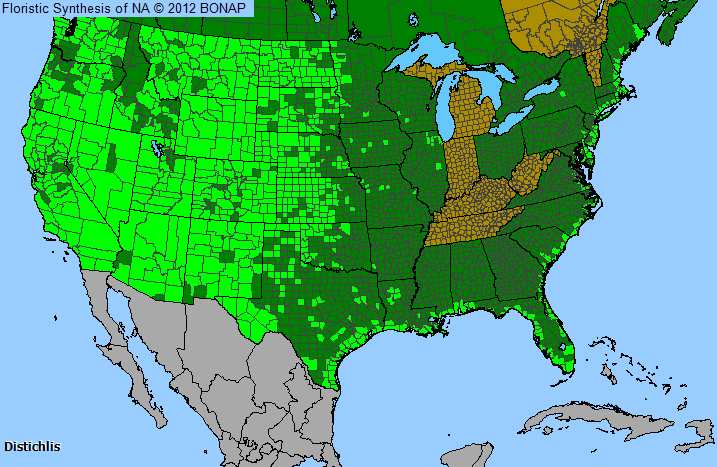
Plant Allergy Overview
Allergenicity
Moderate
Pollen Season
Full Year
Type
Grass
Sub-Type
Perennial
Allergy Information
Distichlis spicata has been reported to be a serious cause of pollinosis in California and of moderate importance in Oklahoma.
Genus Details
Saltgrass is a perennial that grows in dense mats along seashores and salt marshes. Plants are 3 to 14 inches tall with very narrow leaves. The leaves are 3/4 to 5 inches long and are rolled inward toward the upper side (C-shaped). Flowering occurs from May to August in the southwest US and during March to December in the southeast region. Saltgrass grows in moist, alkaline or saline soils near creeks and lakes, brackish marshes, along roads and open fields.
Pollen Description
Grains are spheroidal to ovoidal, sometimes elliptical. The exine is thin and the surface is granular to finely reticuloid. Poaceae apertures are 1-porate, with the pores usually circular to ovoidal.
Grains are 22-122 micrometers in diameter.
Genus Distribution

The shaded areas on the map indicates where the genus has been observed in the United States.
 - Native, observed in a county
- Native, observed in a county  - Introduced, observed in a county
- Introduced, observed in a county  - Rarely observed
- Rarely observedSpecies in Salt Grass Genus
Allergens & Plants Search
Enter a full or partial species name to find more information on one of over 1,200 potentially allergenic plants.
For example, you can find chenopods searching on "cheno"
